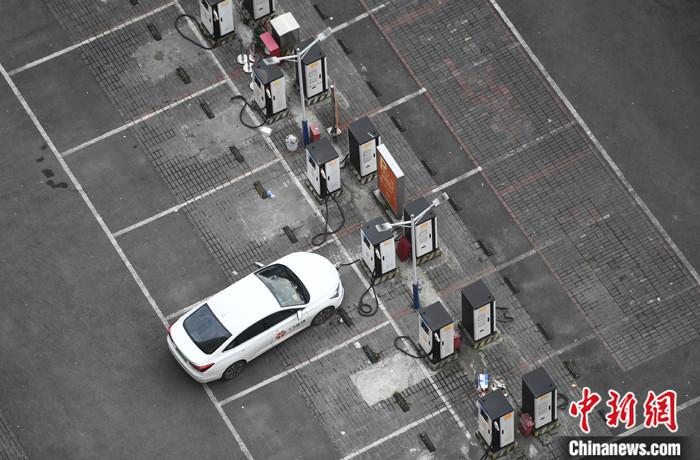China News Service, Beijing, November 3 (Reporter Liu Yuying) Xin Guobin, Vice Minister of China’s Ministry of Industry and Information Technology, said on the 3rd that China has built the world’s largest charging network, but it still lags behind consumer demand and needs to increase construction Strengthen and optimize the layout.
Data map: New energy vehicle charging pile.
Photo by China News Agency reporter Chen Chao
On the same day, the State Council Information Office held a regular briefing on the State Council’s policies to interpret the recently announced "New Energy Automobile Industry Development Plan (2021-2035)".
The plan proposes to vigorously promote the construction of charging and swapping networks and speed up the construction of charging and swapping infrastructure.
According to Xin Guobin, as of September this year, China has built a total of 42,000 charging stations, 525 replacement stations, 1.42 million charging piles of various types, and a vehicle-to-stack ratio of approximately 3.1:1.
China has built the world's largest charging network.
But this still lags behind consumer demand.
Xin Guobin said that in the future, the Ministry of Industry and Information Technology will strengthen the overall coordination with urban and rural construction planning, grid planning and property management, and accelerate the formation of a moderately advanced highway and urban and rural public charging network with fast charging as the main and slow charging as a supplement to improve user charging. Experience.
The "replacement" mode is also mentioned in the plan.
Xin Guobin said that this approach is also being explored.
The separation of car and electricity will greatly reduce the cost of consumers' car purchase. The value of a new energy car battery is about 30% to 40%. If the battery is not purchased, the car price can be reduced by at least 30% to 40%.
In addition, after the separation of the vehicle and electricity, the professional battery operation company will be responsible for the charging and discharging and distribution of the battery. Each time the battery is charged and discharged, a safety test can be considered, which is more conducive to safety.
According to Sun Guangqi, Director of the Economic Construction Department of the Ministry of Finance, the support policies related to new energy vehicles were initially mainly to support the purchase, but now they have been gradually adjusted to support the purchase by the central government, and local governments mainly subsidize the construction and operation of charging infrastructure.
In the next step, the Ministry of Finance will continue to study and optimize the incentive and subsidy policies for charging infrastructure with relevant departments.
(Finish)

